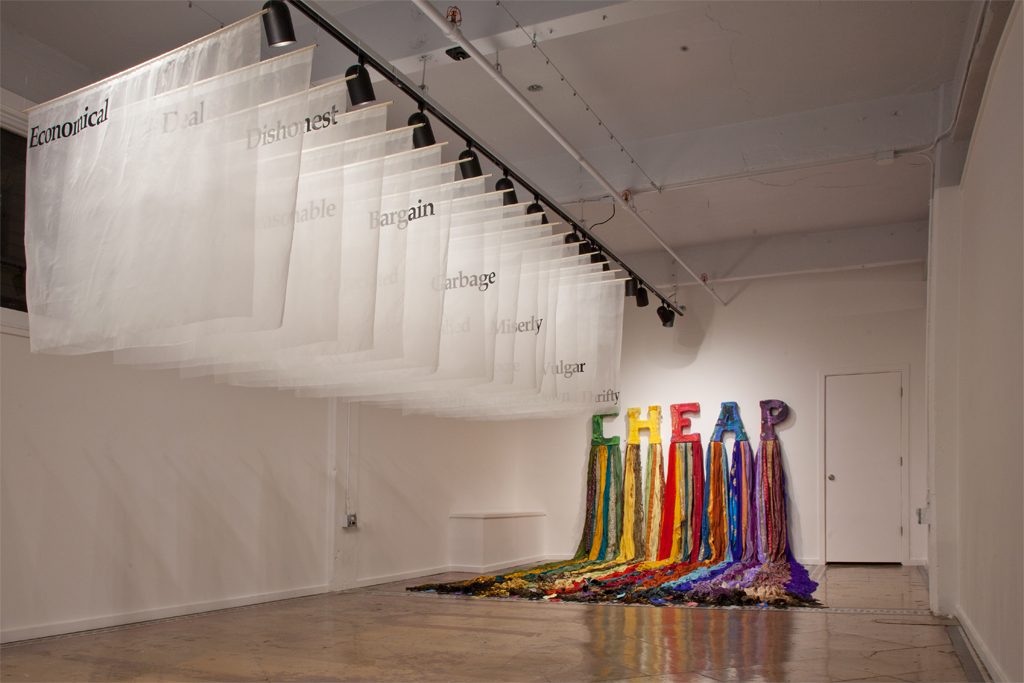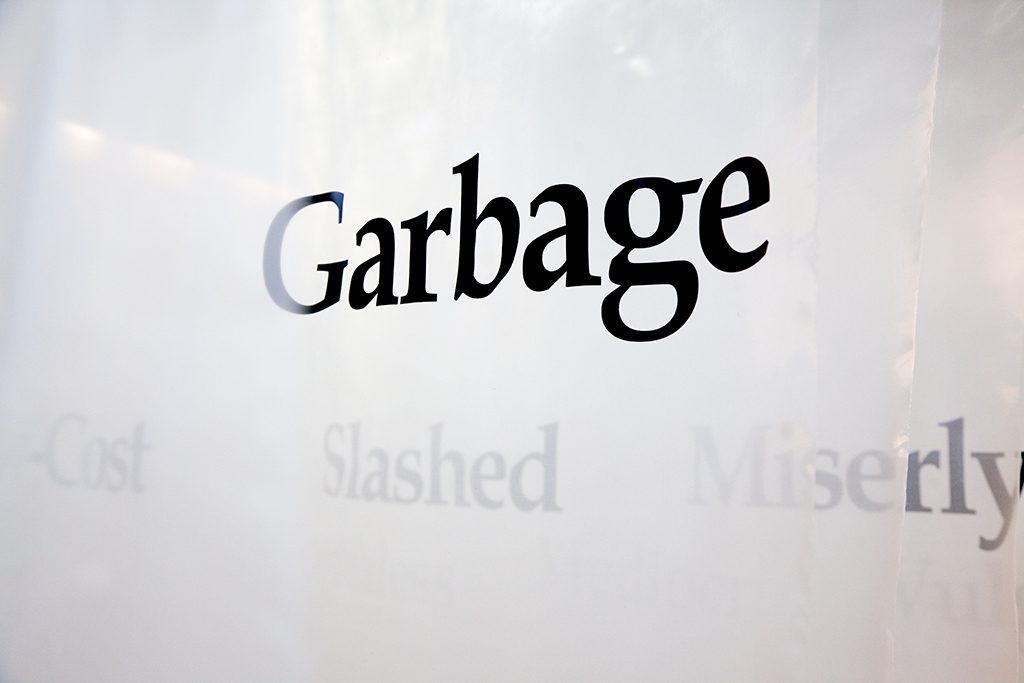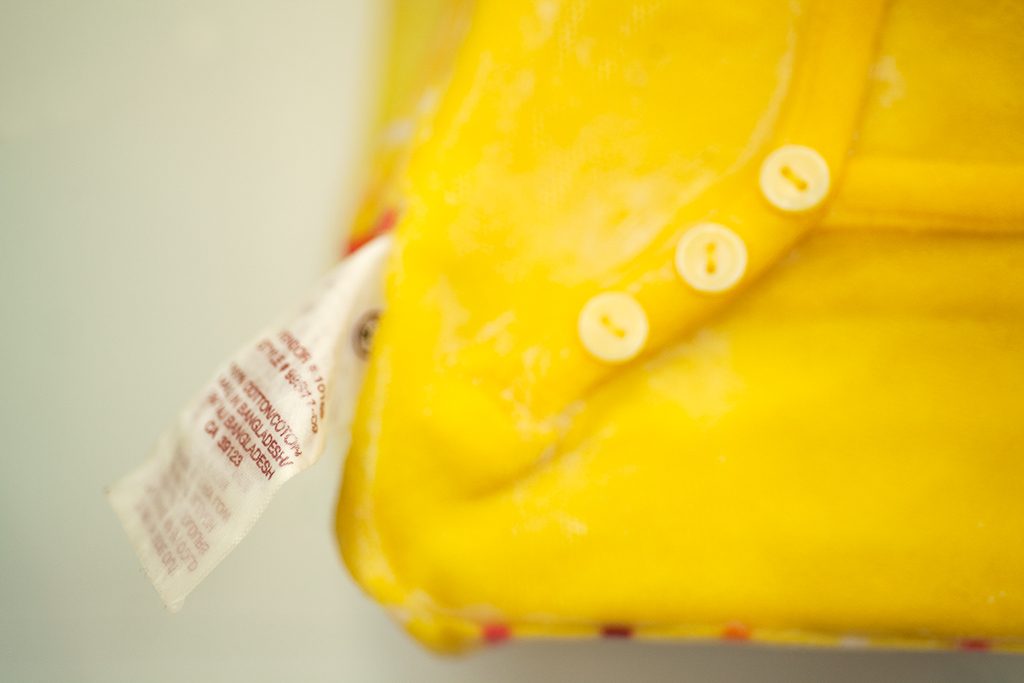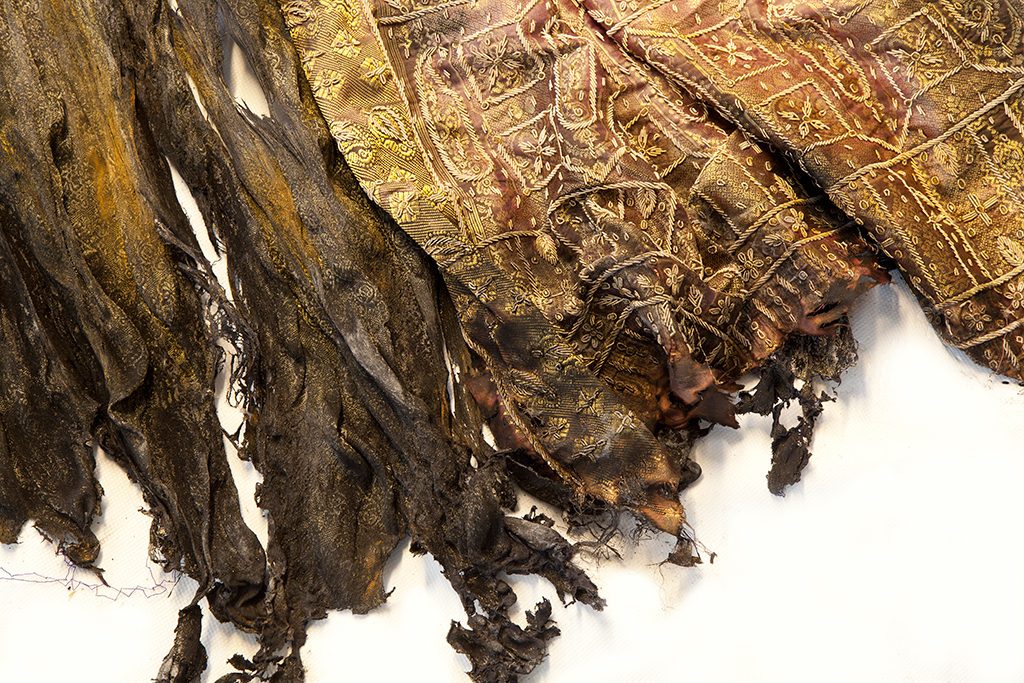Solo exhibition at the Method Gallery in Seattle WA.
The central theme of the CHEAP installation is to examine issues of consumerism and to incentivize new ways of looking at this loaded word. My intention with this work is to use the word cheap to address the environmental impact of disposable goods through the lens of the fast fashion industry. In this new work, the word cheap will be accompanied with a long list of synonyms set within a textile context.

CHEAP is inspired by a billboard ad I witnessed in 2014, which depicted happy jumping children in bright coloured clothing with a tagline that included the word cheap. This ad by the Canadian company Joe Fresh was out at the same time as the Rana Plaza factory disaster in Bangladesh, where purple girl’s shorts sporting their apparel label were found in the rubble. The Rana Plaza collapse is considered the deadliest garment-factory accident in history, killing 1,134 people and leaving thousands more injured. Today, the plight of these workers, is till relatively unknown as the big fast-fashion companies such as Walmart, H & M, Forever 21 and Zara to name a few, maintain their corporate supply chain policies which lead to working conditions tantamount to slave labour.
The installation is comprised of two components. The most predominant is a wall mounted three-dimensional text of the word Cheap, fabricated out of used T-shirts, wax and burnt saris. The surface and edges of each letter have exposed labels stating that they were made in Bangladesh and the overall texture reveals garment details such as collars and buttons. I chose brightly coloured T-shirts because this palette reflects the designers attempt to market their clothing as fun, inexpensive and disposable. Fixed in wax, the word carries a subtle undertone of temporality and volatility. By contrast the colourful saris attached to the bottom of each letter represent the grim reality of factory work and the fires that so often ensue. These are burnt on the edges but mostly on the ends, where the charred fabrics flow up to 15 feet in length onto the floor.
The second component is hung from the ceiling and opposite the CHEAP piece. It is comprised of sheer fabrics with only one word printed on them, but when viewed from the center it reads as a paragraph of text. The words are a series of synonyms of cheap, which reflect a wide range of interpretations ranging from the more positive “bargain” to the derogatory “vulgar”.



